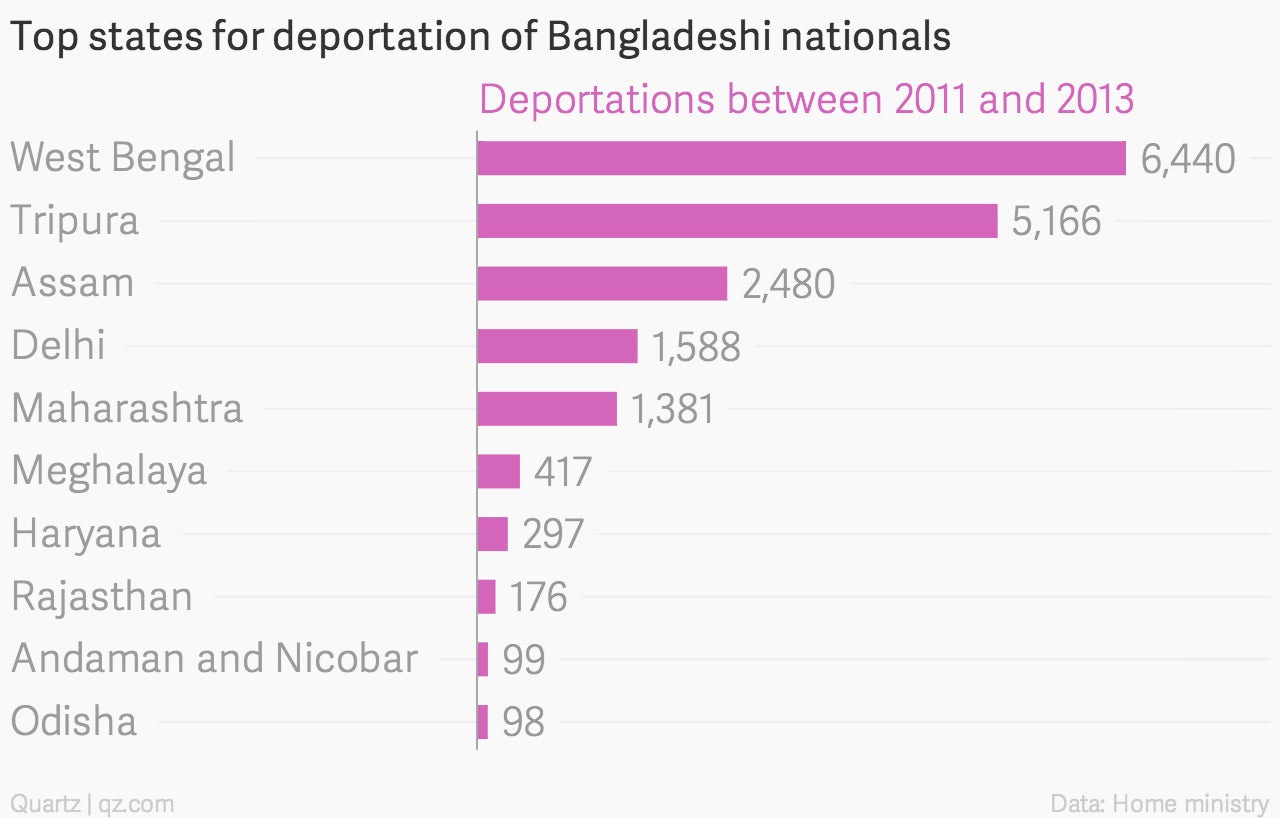Narendra Modi’s plan to stop illegal immigration from Bangladesh is full of holes
Prime minister Narendra Modi has indicated that his government is open to executing a land swap with Bangladesh that will iron out long-standing border disputes and help thousands of people who live along the 4,096.7 kilometer-long common land boundary.


Prime minister Narendra Modi has indicated that his government is open to executing a land swap with Bangladesh that will iron out long-standing border disputes and help thousands of people who live along the 4,096.7 kilometer-long common land boundary.
The deal, once ratified by the Indian parliament (PDF) will redraw India’s boundary with Bangladesh, where New Delhi will cede 17160 acres of land, in return for 7110 acres and swap enclaves. Enclaves are areas which are surrounded from all sides by foreign territories. India currently has 111 enclaves belonging to Bangladesh, while Bangladesh has 51 such areas.
Modi, in a speech in Assam on Dec. 01, also assured that the land swap—which his own party had previously vehemently opposed—would stop illegal Bangladeshi migrants from entering into India.
“The government will utilise the India-Bangla land transfer agreement to seal all routes across the international border through which illegal Bangladeshi migrants have been entering Assam and creating havoc in the state,” the prime minister said.
But stopping illegal immigration from Bangladesh isn’t quite as simple.
For one, the India-Bangladesh border is a long, snaking boundary that traverses multiples states and terrains—and has settlements on both sides.
“The entire stretch consist of plain, riverine, hilly/jungle and with hardly any natural obstacles. The area is heavily populated, and at many stretches the cultivation is carried out till the last inch of the border,” commerce minister Nirmala Sitharaman told parliament earlier this year.
The border encompasses six states, with West Bengal and Tripura sharing the longest boundaries with Bangladesh.

Although the government is fencing 3326.14 km—the world’s fifth longest such fence—of the 4096.7 km-long border, the project is running behind schedule because of land acquisition problems, protests, wildlife and environmental clearances and other factors, the home ministry said in November.
Moreover, the ministry said that there is “no proposal under consideration to construct fence on the riverine area of the Indo-Bangladesh border.”
So, even if the land swap goes through, sealing the border entirely isn’t going to be particularly easy.
The government, in a sense, is also fighting an invisible enemy—and it has no exact figures on the number of illegal immigrants who have entered the country from Bangladesh.
“There are reports of Bangladeshi nationals having entered the country without valid travel documents. Since entry of such Bangladeshi nationals into the country is clandestine and surreptitious, it is not possible to have accurate data of such Bangladeshi Nationals living in various parts of the country,” minister of state for home affairs Kiren Rijiju told parliament in August this year.
Other estimates range between 10 and 15 million Bangladeshis living in India illegally, but there are no reliable numbers.
And the government cannot even manage to send back those Bangladeshis it knows are staying in the country illegally.
At the end of 2012, for instance, 16,530 Bangladeshi citizens with valid travel documents were found to be overstaying in India—while 6,537 and 5,234 Bangladeshi nationals were deported in 2012 and 2013, respectively.
Meanwhile, fake identity cards are being issued to a large number of immigrants in West Bengal, which makes it even more difficult for authorities to identify and deport illegal migrants.
Lastly, the influx of Bangladeshi nationals isn’t restricted to just eastern India, though West Bengal, Tripura and Assam are the largest source of deportations.

So, simply attempting to seal Assam’s borders won’t help. Modi and his government will need to do a lot more to stop the influx.